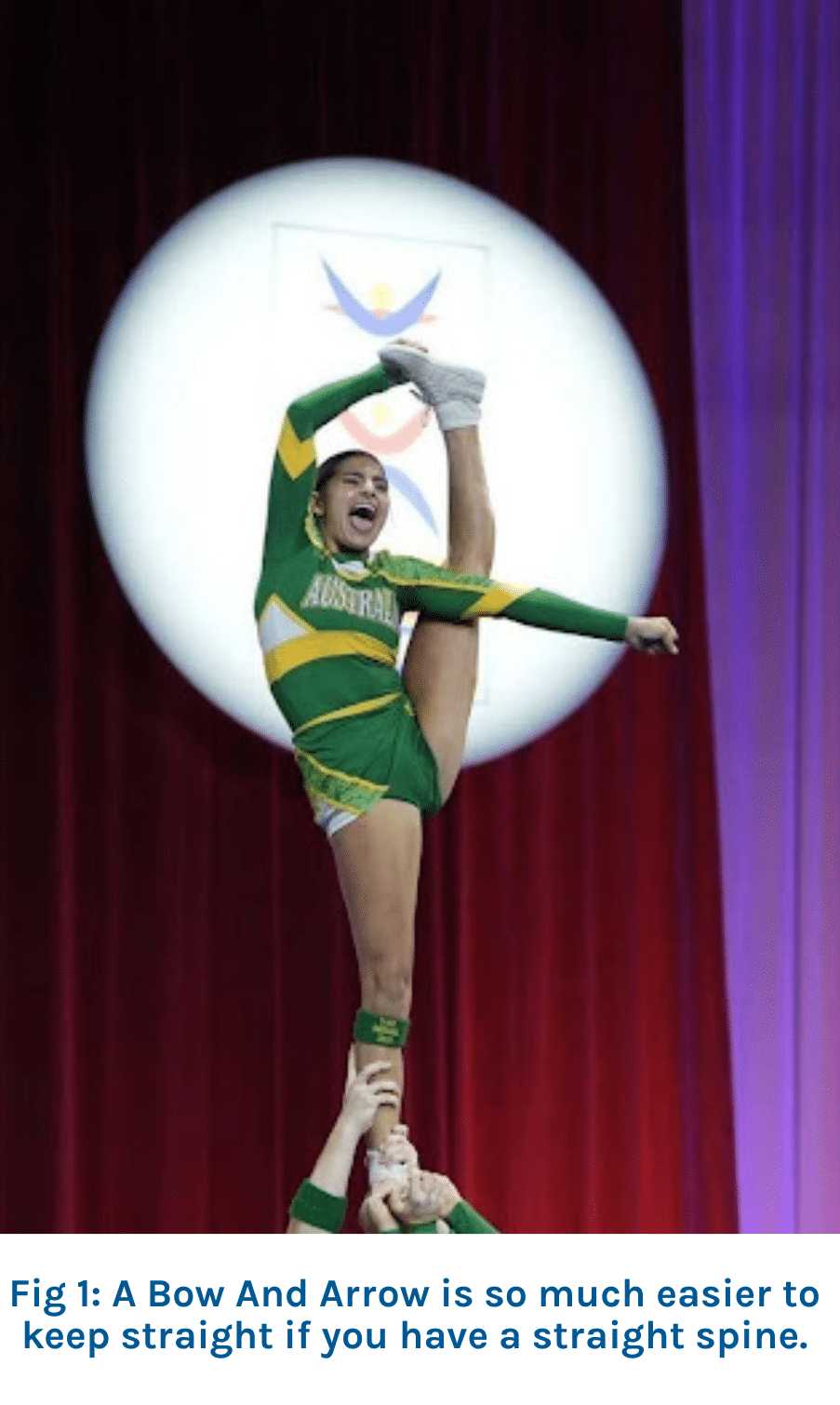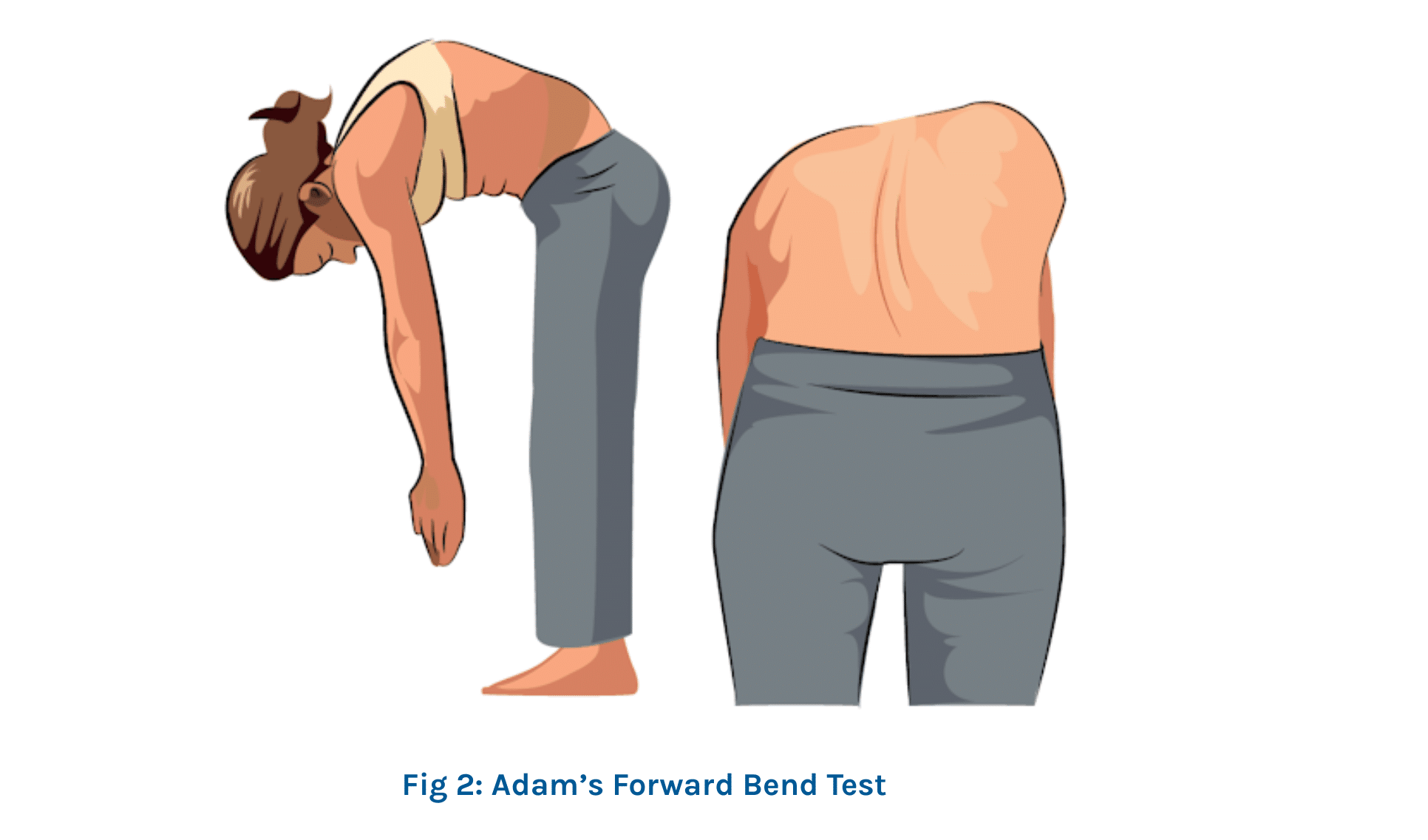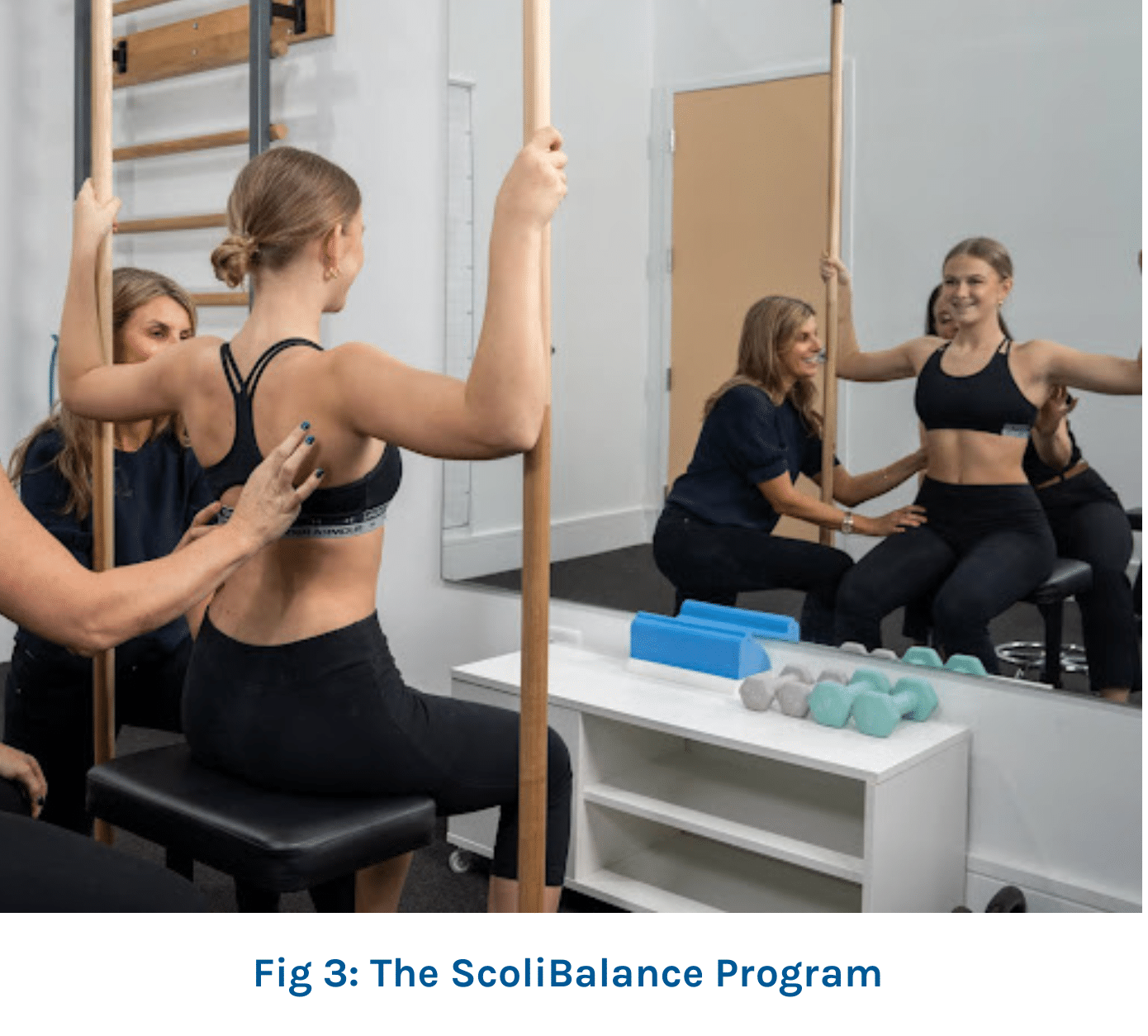All Star Cheerleading is all about precision, power, and pizzazz—whether you’re nailing a back handspring, soaring as a flyer, or holding steady as a base. But what happens when a flyer’s spine isn’t quite as straight as their stunt lineup? Or if the base is holding a prep and can’t quite get their hands at the right level? Or a back flip full twist just doesn’t seem to be landing right?
Did you know the reason could be scoliosis?
Scoliosis, a 3D condition where the spine curves sideways and rotates, which can create minor to major changes in the shape of the spine, ribs and indeed the entire torso. This can lead to changes in shape of the shoulder blades, rotation of the rib cage and the rest of the trunk (sometimes in multiple directions) and uneven shoulders, waist lines and hips. Scoliosis affects 2–4% of teens meaning one or two athletes on your squad could be dealing with it right now.
For cheer athletes, coaches, and parents, understanding how Scoliosis impacts performance isn’t just about health—it’s about keeping the team strong, safe, and spirited. Let’s break it down.
Scoliosis could be the reason your flyer doesn’t look straight in the air, or a tumble pass is not executed in a straight line.
What is Scoliosis, Anyway?
Picture the spine as the backbone (literally) of every cheer move. Normally, it’s a straight column from neck to tailbone and made up of little blocks called vertebrae with little cushions in between called discs. With scoliosis, the spine veers off course, curving more than 10° side-to-side, coupled with rotation, and it’s visible on an X-ray. The most common type in teens is Adolescent Idiopathic Scoliosis (AIS)—“idiopathic” just means we don’t know exactly why it happens but it can tend to run in families. It often shows up during growth spurts (ages 10–18), right when cheerleaders are hitting their stride. Girls are four times more likely to get it than boys and since cheer skews female (at least for the moment), it’s a bigger deal than you might think.
Here’s the kicker: most cases are mild, and many cheerleaders don’t even know they have it until a coach spots uneven shoulders or a parent notices a lopsided uniform fit. But even mild Scoliosis can ripple through performance if ignored—so let’s dive into how.
How Does it Affect Cheer Performance?
Scoliosis doesn’t automatically bench you, but it can tweak how you tumble, stunt, and shine. The impact depends on the curve’s severity—measured in degrees—and where it sits on your spine. Here’s the rundown:

- Mild Curves (10–20/25°): Most cheerleaders fall here—about 80% of AIS cases. You can usually keep cheering full throttle. Your back might feel a bit stiff after a long practice, or you might notice one shoulder dips during a basket toss. Flexibility could take a hit—think tighter trunk muscles may make a Bow and Arrow hard to keep slick and straight (Fig 1) —but this could be manageable under the care of a scoliosis-trained health professional. Performance-wise, you’re still in the game.
- Moderate Curves (20/25–40°): This is trickier. A brace is likely to come into play (worn 16–23 hours a day), which can be challenging for a cheer athlete on a high volume training schedule. While the brace can be worn with many sports, it won’t be able to be worn during cheer training or performance. Once the curve is this severe the athlete needs vigilant management of the condition by a Scoliosis Clinician. This athlete will require physiotherapeutic scoliosis specific exercises (PSSE) such as ScoliBalance, and a 3D custom asymmetrical brace. Keeping up sport and fitness is helpful during this stage of scoliosis but this doesn’t replace the scoliosis specific care that the cheer athlete will need. They may even be asked to limit high-flying stunts or fast tumbling. They might shift from flyer to base—less airtime, more grounding. Coaches might see uneven landings or hear “my back’s sore” more often. It’s not a dealbreaker, but adjustments are key. Ideally this won’t need to happen but the earlier Scoliosis is diagnosed, the less likely the athlete will have progressed to this severity.
- Severe Curves (>40°): Rare, but serious. Surgery might loom if the curve keeps growing—think spinal fusion with rods. Pre-surgery, you’re sidelined from flips and lifts; post-surgery, recovery takes 6–12 months, and some moves (e.g., full twists) might stay off-limits. Roles could switch permanently to spotting or choreography.
The physical toll isn’t the whole story. Scoliosis can dent confidence—imagine a flyer fretting over a visible rib hump in a tight uniform. That mental game matters in a sport where spirit’s half the score.
Spotting It on the Squad
Coaches, you’re the first line of defense. During warm-ups, watch for:
- Uneven shoulders or hips—does one side sit higher in a plank?
- A rib hump—check side bends or toe-touches; one side might bulge.
- Complaints of stiffness or pain—rare in AIS, but a red flag if persistent.
Athletes, listen to your body. If backbends feel off or you’re favoring one side, speak up. Parents, peek at posture—does their backpack hang lopsided? A quick forward bend test (Adam’s test—lean forward, palms together) can hint at a curve (Fig 2); if ribs poke out unevenly, it’s time to visit a scoliosis clinician.

Does Cheer Cause Scoliosis? Busting Myths
No — tumbling, flying or basing didn’t twist your spine to create Scoliosis. AIS is idiopathic, not injury-driven. Heavy stunts or falls might make an existing curve ache or maybe even trigger progression, but for the majority of cases we are referring to the cause of the scoliosis is unknown.
Another myth? Scoliosis ends your cheer career. False! Most athletes keep going with tweaks. Early detection, not fear, is the game-changer.
Performance Hacks for Cheerleaders with Scoliosis
You’ve got this—Scoliosis doesn’t have to dull your sparkle. Here’s how to stay on top:
- Get the Right Advice: Early diagnosis and seeing a scoliosis specific health professional is imperative.
- Strengthen Evenly: General ‘core strengthening’ and ‘stretching’ will not fix scoliosis. Scoliosis requires specific 3D programs that aim to improve the posture of the athlete in a 3D way. General Pilates or Yoga just won’t cut it. This needs a 3D approach from a Scoliosis Rehabilitation Therapist (Fig 3).
- Talk to Coaches: Share your diagnosis. They can tweak routines—maybe fewer one-sided jumps or a base role if bracing kicks in. Teamwork makes it work. Again, chat this out with your Scoliosis Clinician for more advice.
- Brace Up: If prescribed, wear that brace any time you are not cheering—it’s like a cheer uniform for your spine. Many modern 3D custom braces have a sleek design and you can barely see them under most clothes! Or, you can choose to wear it proud!
Coaches, adapt—swap a flyer with a moderate curve for a base spot. Parents, push for annual screenings—catching a 15° curve beats wrangling a 40° one later.
When to Hit Pause
Pain is significant. AIS rarely hurts, so if your back’s screaming—or a curve’s ballooning fast—see your Scoliosis Clinician for an earlier check-in.
The Cheer Spirit Advantage
Here’s the upside: cheerleaders are tough. Scoliosis might tweak your technique, but it won’t kill your grit. Studies show early intervention—bracing or PSSE programs like ScoliBalance—keeps 70% of mild cases from worsening and your trunk muscle endurance will even be able to improve despite your scoliosis (Marchese et al, 2024) You’re not alone either—teammates, coaches, and parents can rally around you. Think of it as a squad huddle for your spine.
Final Pep Talk
Scoliosis isn’t the end of your cheer career—it’s a curveball you can catch. Athletes, own your moves with confidence. Coaches, spot those signs and adjust like champs. Parents, stay proactive—screenings are your playbook.
Together, you’ll keep the spirit high and the stunts sharp, proving scoliosis can’t out-cheer a united team.
🎯 Early detection is everything. If you’re a coach, athlete, or parent who’s noticed any signs or something unusual —don’t wait. Getting checked before the curve gets serious can make all the difference.
📺 Watch our FREE on-demand webinar to learn how to spot scoliosis early in cheer athletes — and what to do next.
📞 Need guidance right now? Call 1300883884 to speak with a member of our team.
Let’s keep our cheerleaders strong, confident, and competition-ready.
#StrongSpinesStrongFutures


